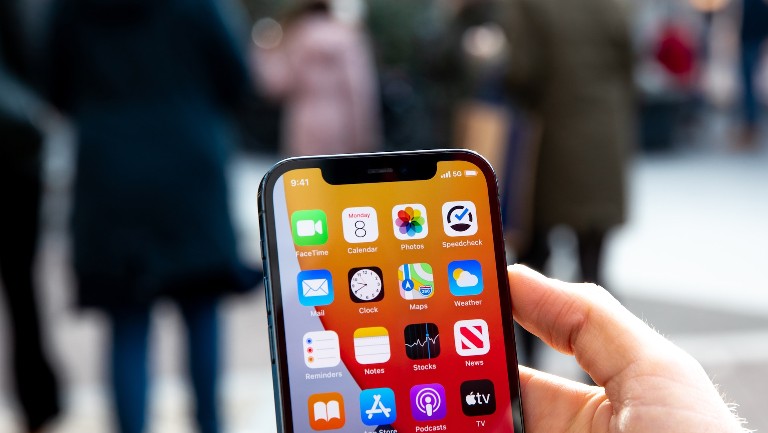Internet
Mobile
Devices
Support
Refer a friend
Moving to Malta
Debunking 5G myths: Your guide to the future of wireless technology
17 August 2023

It has been hailed as the next big thing in technology – the Usain Bolt of the internet world if you will. But along with all the hype, there’s also been a fair share of myths floating around. From tales of 5G causing pandemics (it doesn’t) to worries about radiation (your microwave is probably more dangerous), these misconceptions can cloud our understanding of 5G.
So buckle up as we sift through the myths, untangle the rumours and maybe even laugh at some of the wilder theories circulating out there.
Myth 1: 5G causes health problems
There’s been a whirlwind of rumours suggesting that 5G’s higher frequency radiation poses serious health risks, while at the height of the Covid-19 pandemic, there were even claims circulating on social media that a group of global elites were using it to spread the disease. Others suggested that it causes Covid or that it weakens the immune system, making people more susceptible to it. But before you start wrapping your phone in tinfoil, let’s break it down. Radiation falls into two categories – ionizing (think X-rays) and non-ionizing (like radio waves). 5G falls into the non-ionizing category, meaning it doesn’t have enough energy to break bonds and cause cellular damage, so there’s no credible scientific evidence to suggest that 5G poses a risk to human health. In fact, the WHO (World Health Organization) has clarified that 5G falls within safe radiation limits.
Myth 2: 5G can interfere with weather forecasts
The myth suggests that the frequencies used by 5G, specifically millimeter-wave frequencies, can create interference with the radio frequencies that weather satellites use to gather data. These satellites play a pivotal role in helping meteorologists predict everything from sunny spells to stormy conditions, but the reality is a bit more complex. While it’s true that certain frequencies can interfere with each other, the regulatory bodies overseeing technology deployment, like the Federal Communications Commission (FCC) in the U.S., have established rules and guidelines to prevent harmful interference. What’s more, weather satellites have their own designated frequency bands, separate from those used by 5G networks and it is this precise separation that ensures the two don’t step on each other’s toes, allowing us to have both speedy internet and accurate forecasts.
Myth 3: 5G will replace 4G and Wi-Fi completely
Think of the wireless world as a buffet with different dishes, where each brings unique flavours to the table. As mentioned above, 5G operates at higher frequencies, enabling lightning-fast speeds over short distances, which makes it ideal for crowded areas. As such, it isn’t a replacement for 4G, but rather an enhancement. Both technologies will coexist and complement each other, providing a more reliable, flexible network for everyone. Likewise, 5G and Wi-Fi are like a dynamic duo, complementing each other rather than competing. So, while the latter can offer incredible speed while you’re out and about, your home Wi-Fi is still your trusty sidekick for seamless internet use.
Myth 4: 5G is just about faster download speeds
While it’s true that 5G brings unprecedented speed, it’s more than a turbo-charged internet connection. In fact, latency – the time it takes for data to travel from your device to its destination and back – plays a crucial role here. To put this into perspective, picture a game of catch. With 4G, you throw the ball and your friend catches it… eventually. With 5G, it’s like you’re playing catch just a few centimentres away. That’s what we call ultra-low latency, a game-changer particularly for applications like remote surgery and autonomous vehicles, where split-second decisions matter. But beyond this latency leap, we have increased connectivity since 5G networks can handle numerous devices all at once compared to their predecessors. This means that your smartwatch, phone and even fridge could all stay connected without any interruptions. And lastly, it is the backbone of a future where everything from cars to coffee makers will be connected, creating a seamless, smart world around us.
Myth 5: 5G requires more cell towers everywhere
Another common misconception is that 5G will demand a massive number of cell towers to deliver its high-speed, low-latency promises, which has led to concerns about urban landscapes becoming cluttered with these structures and worries about potential health impacts. But unlike its predecessors, 5G doesn’t rely solely on brute force and sheer numbers of cell towers to provide coverage. Instead, one of the technological marvels at the heart of its efficiency is a technique called “beamforming.” Wondering what that is? Imagine you’re throwing a party and instead of blasting music in all directions, you point speakers towards clusters of people. That’s beamforming and 5G is master of this art. By focusing its signal where it’s needed, it covers more ground, plus it can use existing infrastructure like streetlights and buildings to piggyback its signals, reducing the need for an army of cell towers.
Myth 6: All 5G is the same
Not all 5G networks are created equal. In fact, at the core of 5G’s diversity lies the concept of frequency bands, where each offers unique capabilities and characteristics. Broadly categorized into three main types, these consist of:
- Low-Band 5G: it offers wide coverage, smoothly penetrating walls and buildings, which makes it perfct for providing great connectivity in urban and rural areas alike. Having said that, its top speeds are relatively modest compared to the other types.
- Mid-Band 5G: the so-called all-rounder, mid-band 5G strikes a balance between coverage and speed, making it suitable for areas with moderate population densities. It provides faster speeds than low-band while maintaining good range.
- High-Band (mmWave) 5G: boasts incredible download and upload speeds, but there’s a catch – its signals have a shorter range and may struggle to penetrate obstacles. This makes it ideal for densely populated areas where speed is paramount, like sports stadiums and city centers.
As we demystify 5G, we hope to have quelled the rumours and provide a clearer picture of what this exciting technology really means so that you can embrace the myriad of opportunities it brings. Have a look at this comprehensive guide all about 5G, what it is and how it works.
Wondering how you can get 5G connectivity? Experience the technology with no caps and superior broadband speeds that offer smoother streaming, seamless gaming and uninterrupted browsing among other things with our pay monthly plans, hybrid plans and top-up plans that offer a range of additional perks at a great price.
